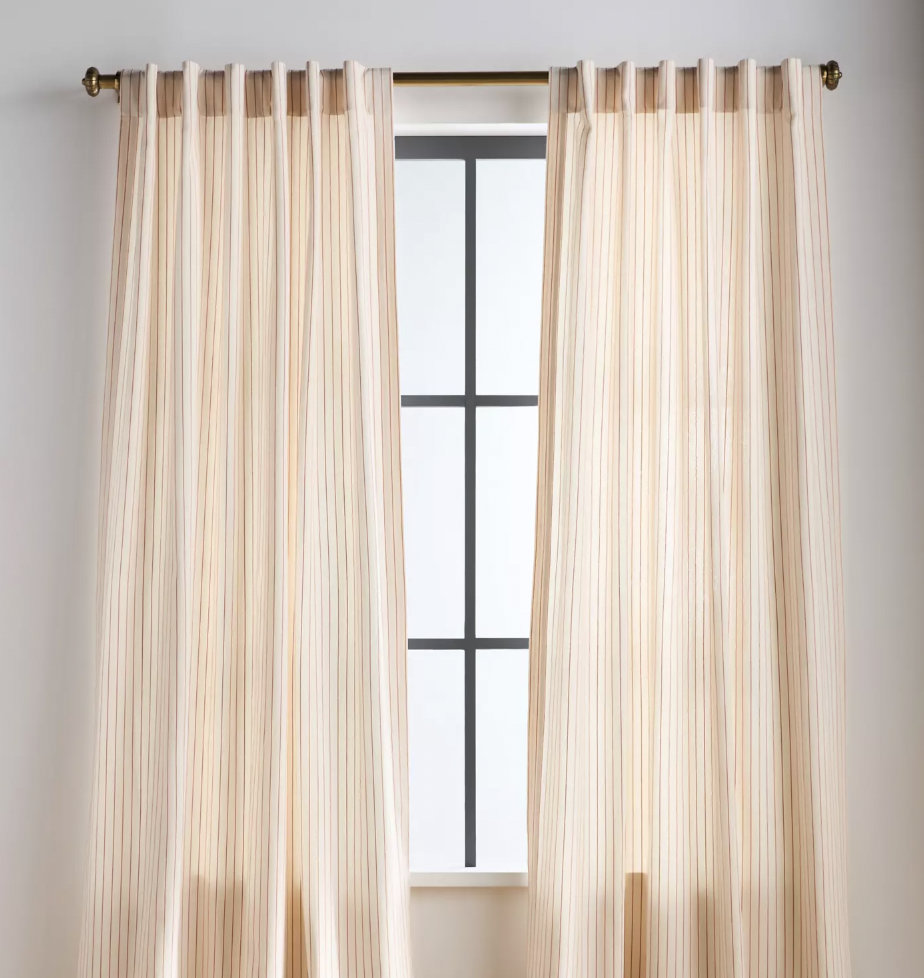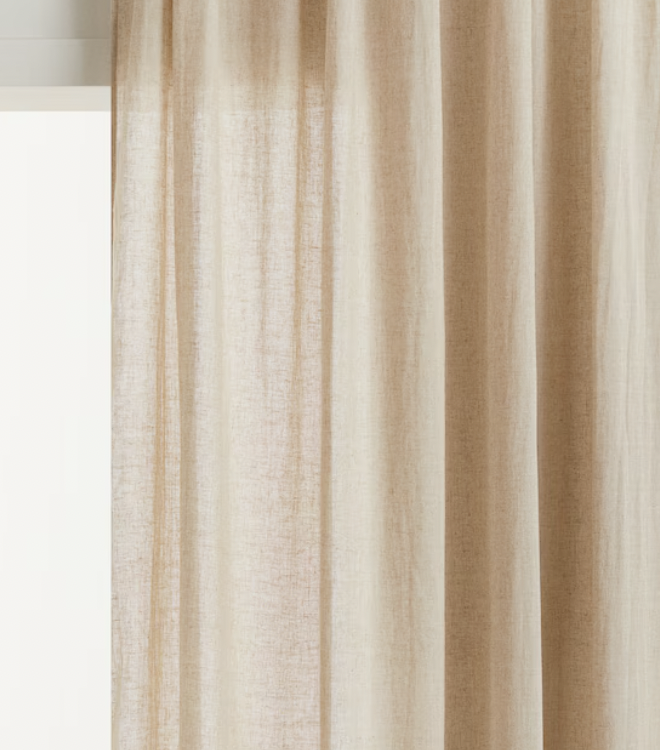How Interior Designers (Secretly) Use Curtains to Make a Room Look Bigger
Turns out, curtains could be the most underrated design tool for creating an optical illusion in your home


Our curtains can do more than just block out light — in fact, in a small room, they can actually visually alter how spacious it feels. Playing with height, width, style, color, and fabric can create a sense of scale and size, and curtains are one of the most powerful yet untapped tools in interior design when it comes to influencing how large or intimate a space feels.
"Curtains are architectural tools as much as they are decorative," says interior designer Rachel Hurley of StudioHA. "When placed strategically, they stretch a room’s proportions and invite the eye to travel."
So, how do interior designers work such magic when it comes to modern window treatments? Below, they reveal all.
1. Hang Curtains High and Wide

A dining room with sheer floor-to-ceiling curtains to help create the illusion of more space.
Designers will always tell you that so much of enlarging a space is all about illusion and tricking the eye. You want to maximize light and use high ceilings to your advantage to create the impression of grandeur. Certain styles of curtains can help you do both.
This is exactly what Sophie P-Lefebvre of eponymous design studio, Sophie Lefebvre Design, has done with the project above, cleverly using dining room window treatments to create the effect of a large room by designing them to seamlessly blend in (and blur the lines) rather than play a standout decorative role.
"We created this look and enlarged the space by hanging them high and wide," says Sophie. "We mounted the rod at the ceiling, or as close as possible to it, and extended it beyond the window frame to create the illusion of taller and wider windows."
It was crucial to keep a clean line, too. "We used floor-to-ceiling panels, without excess pooling at the bottom, to create a streamlined, elongated effect," she adds.
The Livingetc newsletters are your inside source for what’s shaping interiors now - and what’s next. Discover trend forecasts, smart style ideas, and curated shopping inspiration that brings design to life. Subscribe today and stay ahead of the curve.
Interior designer Leo Cesareo agrees that your best bet is to install the curtain rod as close as possible to the ceiling to enlarge a space. "This draws the eye upward, making the ceiling feel taller," he adds.
But it's not just about height. You want to extend across as far as you can width-wise, too. "This way, when the curtains are open, the view out the window isn’t covered, letting in more light and making the window feel bigger," adds Leo.

Leo Cesareo is an interior designer based in San Francisco, who founded his eponymous design studio, Leo Cesareo Design with a mission to redefine the boundaries of contemporary interior design.
2. Consider the Influence of Color
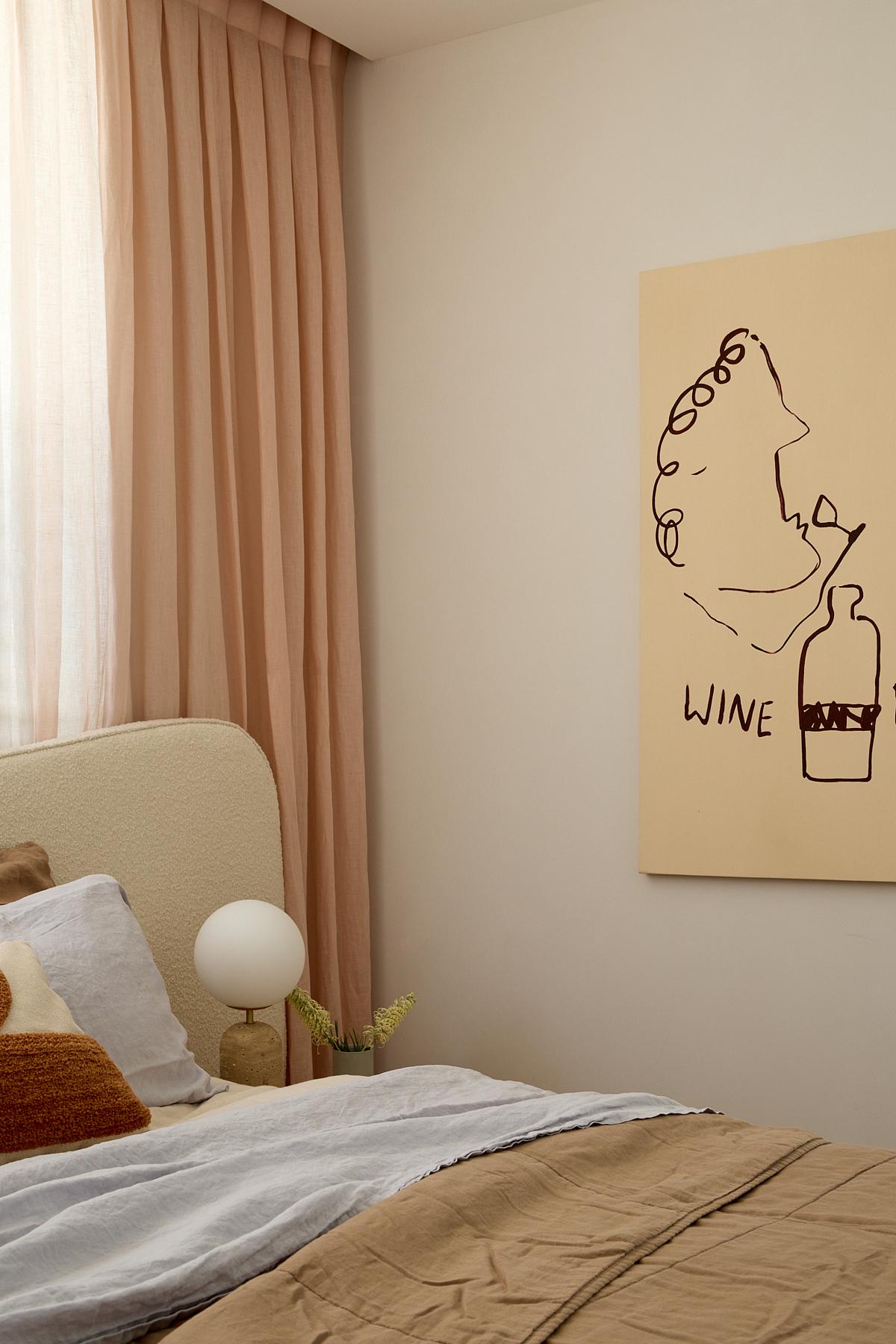
The color of your curtains can have a huge impact on how big or cozy your room feels.
It may not come as a surprise that almost every designer agrees that the best curtain color for making a room look bigger is neutral shades, such as white, cream, or beige. This helps a space feel open and airy.
It's not the only option, though. You could opt for a dark-colored curtain, but only if you're color-drenching the space, and matching it to a dark wall. "Choosing curtain colors that blend with the wall helps the room feel cohesive and uncluttered," says interior designer Emilija Hopenaite of the design firm, The Stylesmiths.
Sophie P-Lefebvre adds, "Whatever you choose, select a harmonious palette. Soft, light, or tone-on-tone colors blend with the walls and visually enlarge the space."
And it's not just about the color of the fabric, either. Using neutral hardware can also help remove visual clutter. "Ideally white," says Emilija, "so it blends into the wall."
3. Opt for Lightweight Fabrics

Light, sheer curtains instantly make a space feel lighter and brighter.
Choose lightweight, flowing fabrics as these will create the impression of tranquility. Sheer or semi-sheer materials are the best fabrics for curtains, allowing natural light to filter through, making the space brighter and more airy.
"Light, fluid fabrics like linen or voile can be used like soft-focus filters, allowing daylight to trickle through the interior, and when chosen in tones that merge with the walls, they erase visual breaks and let the space breathe," explains Rachel Hurley of StudioHA. "Perception of space is key, and curtains can be the easy win that changes the way your space reads."
Anthony Chan of Chan Architecture agrees that sheer fabrics are best for increasing the sense of space in a room. "Light, semi-transparent textiles let daylight flood through while still providing softness and privacy, keeping the space bright and airy rather than closing it in," he says.
Heavier blackout curtains can have a cozy effect, but that is often the result of making a space feel smaller and more enclosed, or intimate. "Blackout curtains, especially in a bedroom, make it feel darker and more private, but can make a room feel smaller, as they limit the amount of daylight coming in," warns Jeremias Lim of ELC Architecture and Interiors.

Rachel Hurley is the founding director and an architect at studioHA, a company that specializes in high-end residential and commercial design.
4. Hide Bulky Rails Behind Recessed Ceilings
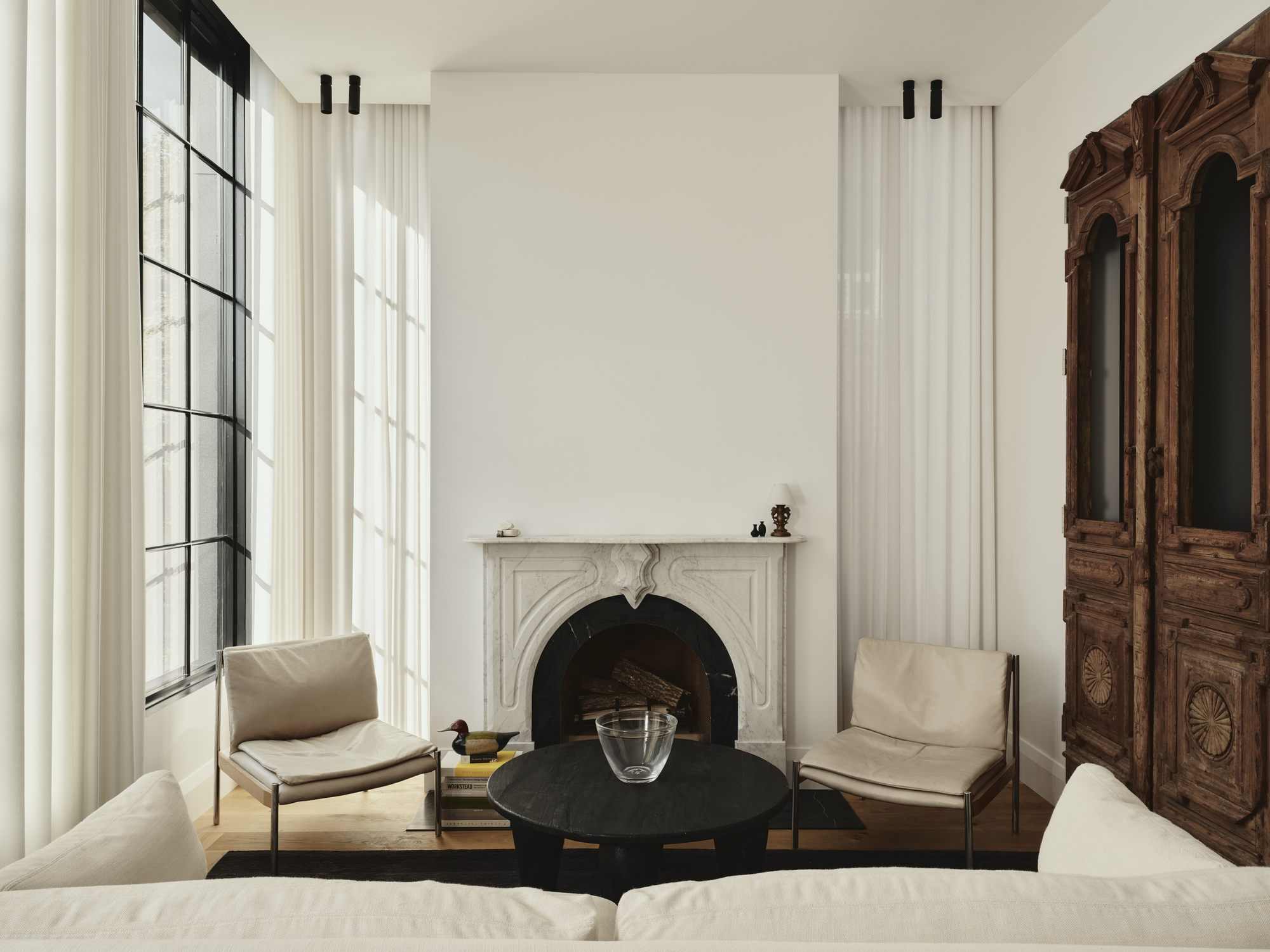
By disguising the tops of the curtains with bulkheads, you can't actually tell where the walls end, making the space feel taller.
For this modern living room by Maniera, the ceiling was recessed around the windows — a strategy used to hide the bulkheads and give a cove-like effect.
"We opted to carry the windows straight up into the cove to appear as though they were continuing infinitely above the dropped ceiling," explains Cameron Bird of Maniera. "We added the draperies to also look like they are continuing into the ceiling. It makes the space feel even taller than it is, as the eye cannot tell where the window ends."
Flanking the fireplace were two narrower windows, which the designers dressed with drapery intended to remain closed, giving a tall, columnar-like feel that accentuates the height of the space and invokes grandeur. "The soft curves of the draperies also give a fluting effect harkening back to the idea of columns," adds Cameron.
5. Create a Sense of Seamlessness
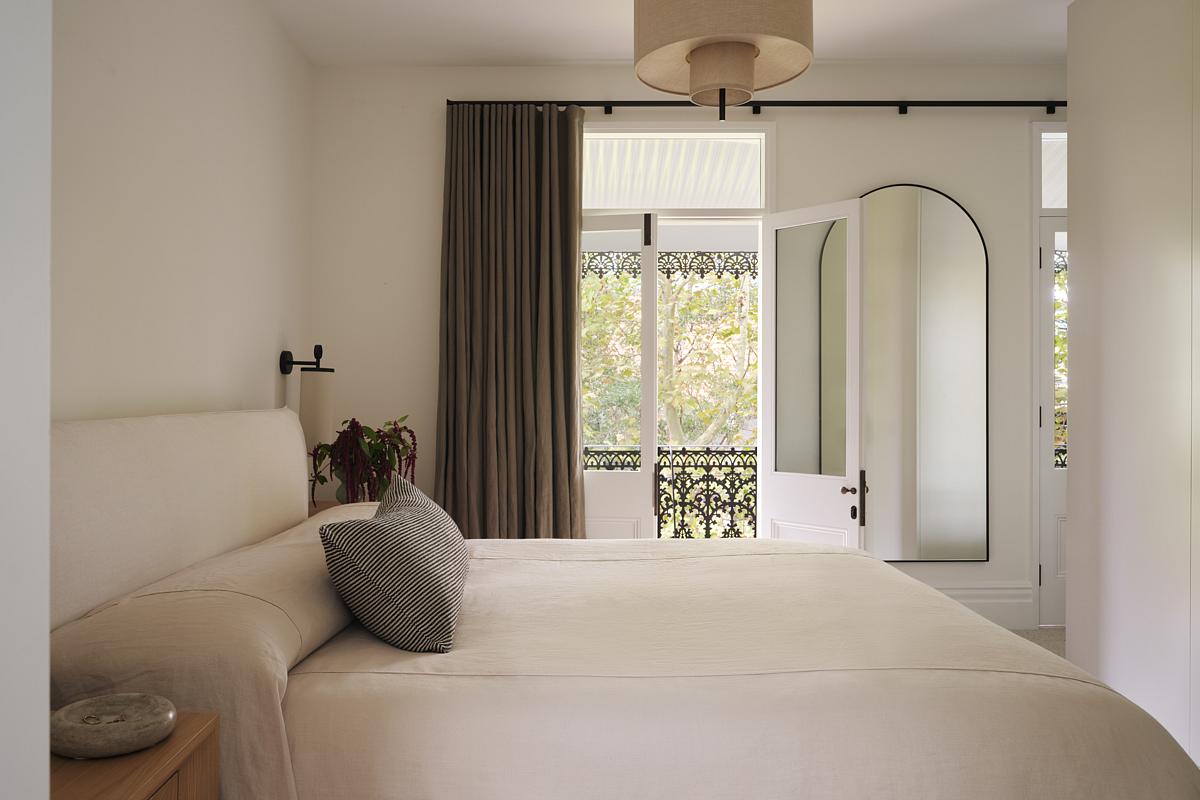
Less visual disruption and a seamless aesthetic is always going to make a room look bigger.
A curtain that glides easily and hangs softly avoids visual heaviness, enhancing a feeling of flow and spaciousness. So it's worthwhile to find ways to add seamless flow in open-plan spaces to create a calming sanctuary.
"In this contemporary rear extension, we used a sheer with a recessed track and single stack for a streamlined, modern feel," explains Margot Warre of Modify Homes, who designed the space above. "This allows the room to open fully to the courtyard, blurring the line between inside and out."
Margot selected manual over motorized smart curtains for flexibility, too. "This gives flexibility in how each space is dressed and more control over light and privacy — especially important in a home where heritage character meets contemporary living," she adds.
When it comes to using curtains to make a room look bigger, it's important to think about the lines you're creating — both with their width and length. "Full-length panels that gently kiss the floor enhance vertical lines," explains Emilija.
Interior designer Leo Cesareo says it's what he obsesses over whenever choosing curtains for his projects. "Let the curtains slightly puddle on the floor," he adds. This adds luxury and polish, which psychologically makes the space feel grander.

Former content editor at Livingetc.com, Oonagh is an expert at spotting the interior trends that are making waves in the design world. She has written a mix of everything from home tours to news, long-form features to design idea pieces, as well as having frequently been featured in the monthly print magazine. She is the go-to for design advice in the home. Previously, she worked on a London property title, producing long-read interiors features, style pages and conducting interviews with a range of famous faces from the UK interiors scene, from Kit Kemp to Robert Kime. In doing so, she has developed a keen interest in London's historical architecture and the city's distinct tastemakers paving the way in the world of interiors.
